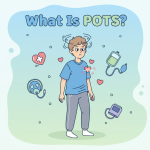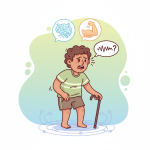Have you heard about ketamine but wonder what it really is? Whether used as an anesthetic in surgeries or as a groundbreaking mental health treatment, ketamine has become a buzzword in medical circles and beyond. Approved in the 1970s as an anesthetic, ketamine’s versatile properties have led to its growing use in treating conditions like treatment-resistant depression. This article explores what ketamine is, how it works, its medical uses, benefits, risks, current trends, and everything adults need to know to make informed decisions.
Understanding Ketamine
What Is Ketamine? Basic Definition
Ketamine is a medication primarily known as a dissociative anesthetic, inducing a trance-like state while blocking pain. It works differently from traditional anesthetics by targeting the NMDA (N-methyl-D-aspartate) receptor in the brain, affecting neuron communication and producing rapid brain activity changes.
History and Medical Approval
First synthesized in 1962 and approved in the 1970s for anesthesia, ketamine revolutionized operating rooms with its safety profile. In recent years, ketamine’s potential in mental health was discovered, leading to FDA approval of a nasal spray form (esketamine) for treatment-resistant depression in 2019.
Different Forms of Ketamine
Ketamine is administered intravenously (IV), intramuscularly (IM), orally, and as a nasal spray (esketamine). The form depends on treatment goals and patient needs.
Medical and Therapeutic Uses
Ketamine as an Anesthetic
Ketamine is widely used for anesthesia and pain relief, especially in emergencies, due to its rapid onset and cardiovascular stability.
Ketamine for Mental Health
Particularly effective in treatment-resistant depression, ketamine offers rapid symptom relief, sometimes within hours. It’s also being studied for PTSD, anxiety, and chronic pain.
Pain Management and Emergency Uses
Beyond mental health, ketamine manages acute and some chronic pain, offering an opioid alternative amid the opioid crisis.
Emerging Research and Uses
Ketamine’s effects on brain plasticity open avenues for bipolar disorder, OCD, and substance use disorder treatments.
How Does Ketamine Work?
NMDA Receptor Antagonism
Ketamine blocks NMDA receptors, altering glutamate pathways essential for neural signaling and pain processing.
Impact on Neuroplasticity
It promotes new synapse growth, enhancing brain connectivity, which might underlie its antidepressant effects.
Rapid Antidepressant Effects
Unlike standard antidepressants that require weeks, ketamine’s effects often appear within hours.
Benefits and Risks
Therapeutic Benefits
-
Fast relief of depression and suicidal thoughts
-
Pain relief without opioids
-
Potential in PTSD and anxiety
Side Effects and Risks
-
Dissociation, hallucinations
-
Elevated blood pressure and heart rate
-
Nausea, dizziness
-
Risk of misuse without supervision
Safety Measures
Ketamine treatment is safest when medically supervised with patient screening.
Practical Considerations
What to Expect in Therapy
Therapy sessions last 40-60 minutes with careful monitoring to manage side effects.
Combining Treatments
Ketamine complements psychotherapy and other medications in mental health plans.
Addressing Stigma
Education helps reduce stigma surrounding ketamine use.
Current Trends
FDA Approvals and Off-Label Uses
Esketamine’s approval highlights ketamine’s mainstream acceptance, with expanding off-label applications.
Growth of Clinics
Rising ketamine clinics improve access but require regulation to ensure safety.
Future Research
Ongoing studies aim to refine protocols and assess long-term outcomes.
Frequently Asked Questions (FAQs)
-
What conditions can ketamine treat?
Anesthesia, treatment-resistant depression, PTSD, and pain. -
How fast does it work for depression?
Usually within hours to days. -
Is ketamine addictive?
Risks are low with medical supervision; misuse potential exists otherwise. -
How is ketamine administered?
IV, IM, oral, or nasal spray methods. -
Are there long-term side effects?
Research is ongoing; careful follow-up is essential.
Conclusion
Ketamine is a unique and promising option in anesthesia and mental health, especially known for rapid antidepressant effects. Understanding its uses, benefits, and risks helps informed decisions on therapy. Consult healthcare professionals to explore if ketamine treatment fits your needs.










